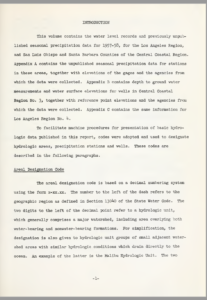Document Details
Bulletin No. 39-58, Water Supply Conditions in Southern California during 1957-1958, Volume II, Precipitation and Water Level Data, Central Coastal and Los Angeles Regions
California Department of Water Resources (DWR) | August 1st, 1960

Keywords
coastal aquifers, conjunctive use, Groundwater Exchange, groundwater recharge, planning and management, water supply